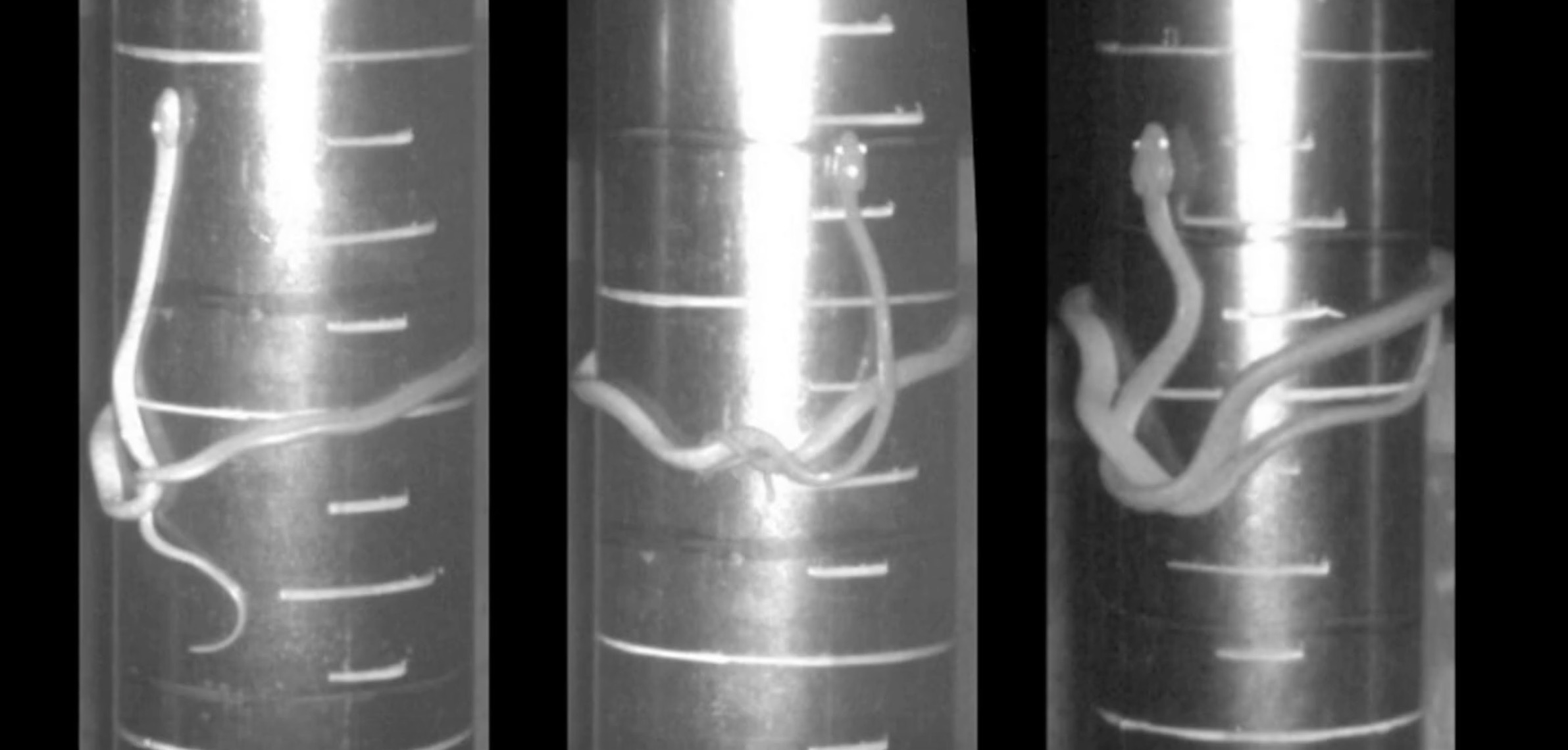Scientists have come together, crunched the numbers, examined the data, produced both charts and graphs, and come to the only logical conclusion in front of them: The snakes are coming.
Until today, consensus within the herpetological community was that snakes had four ways of slithering through the world: the classic sidewinder maneuver; rectilinear movement, a forward-and-back crunching motion in a straight line; a wider arching undulatory movement called side-pushing; and scrunching up then pushing forward in a scaly, accordion-like motion fittingly known as "concertina locomotion." Scientists now have discovered a fifth traversal method, which involves the snake turning itself into a deadly lasso and climbing up an otherwise impassable obstacle to munch on birds.
A quartet of biologists from Colorado State University and the University of Cincinnati began their study of snake ascension years ago, when they found endangered birds on Guam dead in nest boxes built atop cylindrical steel duct pipes meant to keep this exact sort of thing from happening. While it seemed clear that invasive brown snakes had been behind the avian murders, researchers had no idea how the snakes had managed to scale the smooth pipes. Snakes have been known to climb up trees using concertina motion between two coiled segments of their body twisted around the tree like anchors (snakes can also "hop" from tree to tree). But brown snakes aren't big enough to create two anchor points, so they shouldn't have been able to get to the birds.
The researchers published a study today in the scientific journal Current Biology about the new climbing technique, which involves a snake tying its tail into a little knot and using its head to generate upward motion. Look at this lil' guy go!
Brown tree #snakes find new way to climb, turning into a lasso to scale vertical cylinders. Julie Savidge and Bruce Jayne report their findings in @CurrentBiology https://t.co/OpQrKaQjGU@ColoradoStateU @uofcincy
— Cell Press (@CellPressNews) January 11, 2021
Watch the new skill in action below
Video Credit: Thomas Seibert pic.twitter.com/02bisHTWR8
As you can see, this is not the speediest form of transit. The team observed that the brown snakes they found on video were not all that good at climbing, taking two hours to ascend just 10 feet. "Slow speeds, slipping, frequent pausing and heavy breathing during pauses all suggest lasso locomotion is demanding," they wrote, a kinder way of saying these snakes should do more pull-ups and core work if they really want to advance to climbing harder problems. If you were a bird and you heard a snake breathing heavily below you, you would have plenty of time to laugh at said snake before you simply flew to a different tree.
But this is a stealth technique, not a melee weapon, so it has made the brown snake incredibly effective. Since being accidentally introduced to the island shortly after World War II after stowing away on material being transported eastward from New Guinea, the brown snake has been responsible for fucking with Guam's power grid and extirpating a majority of the island's native bird species, including all 12 of its forest bird species. Scientists can now build inaccessible nest boxes for the surviving species, which is a good plan, though not as good as mine, which is: Wait until one is lassoed up then shoot it with a gun.






